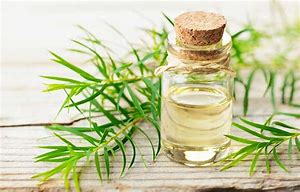









Boldo Leaf - Peumus boldus
Family: Monimiaceae
Synonyms: Boldu boldus, Boldfoa fragrans, boldus, boldu.
General Description: An evergreen shrub or small tree up to 6 metres high, with slender branches, sessile coarse leaves and bearing yellowish-green fruit; when dried the leaves turn a deep reddish-brown colour. The whole plant is aromatic.
Distribution: Native to Chile, naturalized in the Mediterranean region. Some essential oil is produced in Nepal and Vietnam.
Other Species: The Australian tree Monimia rotundifolia contains a similar oil, which has been used as a substitute. The oil of chenopodium or wormseed is also chemically related.
Herbal/Folk Tradition: The bark is used for tanning, the wood utilized in charcoal making and the fruit eaten by locals. In South America it has long been recognized as a valuable cure for gonorrhoea.
In Western herbalism, the dried leaves are used for genito-urinary inflammation, gallstones, liver or gall bladder pain, cystitis and rheumatism. The dried leaves are current in the British Herbal Pharmacopoeia as a specific for cholelithiasis with pain.
Actions: Antiseptic, cholagogue, diaphoretic, diuretic, hepatic, sedative, tonic, urinary demulcent.
Extraction: Essential oil by steam distillation of the leaves.
Characteristics: A yellow liquid with a powerful spicy-camphoraceous, disagreeable odour.
Principal Constituents: Cymene, ascaridole, cineol, linalol.
Safety Data: Extremely toxic. The oil has powerful therapeutic effects, and it can be considered harmful to the human organism even when used in very small doses....should not be used in therapy, either internally or externally.'
Aromatherapy/Home Use: None
Other Uses: Used in pharmaceutals in minute amounts for its therapeutic properties.
Reference: The Encyclopedia Of Essential Oils: Julia Lawless.
Articles Latest
- CARDAMON
- CARAWAY
- CANANGA
- CAMPHOR
- CALAMUS
- Calamintha-Calamintha officinalis
- CAJEPUT- Melaleuca cajeputi
- Plant Expression
- Molecular Target: Cell Membrane
- CADE Essential Oil
- CABREUVA
- The Kashmiri rose oil worth millions
- Agarwood: The natural treasure worth more than gold whose heady scent is driving it towards extinction
- Nonselective Binding to Proteins: The Science of Advanced Aromatherapy
- Molecular Target: DNA, RNA, and Gene Expression
- BUCHU - Agothosma betulina
- BROOM - SPANISH - spartium junceum
- BORONiA - Boronia megastigma
- BORNEOL - Dryobalanops aromantica
- Boldo Leaf - Peumus boldus
- Birch White-Betula Alba
Articles-Most Read
- Home
- Balsam Canadian - Abies balsamea
- Copaiba Essential Oil
- Balsam Peru
- Basil French - Ocimum basilicum
- North America: Tea Tree and Monarda-3
- Basil Exotic
- North America: Tea Tree and Monarda-2
- Exploring Transcultural Constants
- Thyme Essential Oil
- Balsam Tolu
- Palma Rosa
- The Bioactivity of Essential Oils
- Benzoin - Styrax benzoin
- Why Pharmacology Cannot Demonstrate Essential Oil Efficacy
- Bay - West Indian - Pimenta racemosa
- Exploring Essential Oil Activity The Conventional Way
- Aromatherapy: An Answer
- Complex information From Plants
- Contacts
